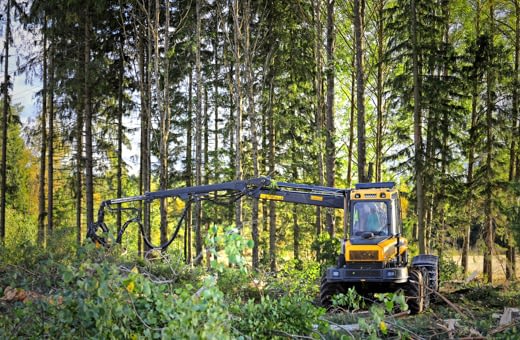The European Commission has unveiled its long-awaited Bioeconomy Strategy, which includes many positive elements. The strategy envisions broad adoption of bio-based materials across the EU and effectively links bioeconomy with sustainable forest management. To turn this ambition into reality, consistency in subsequent legislation and regulation will be crucial.
The Commission aims for sustainable bio-based materials to be widely used across the EU by 2040. The forest industry will play a key role in delivering nearly all these solutions—ranging from bio-based plastics, packaging, textiles, chemicals, and construction materials to fuels and carbon capture technologies. A major strength of the new strategy is its focus on lead markets.
“The EU Bioeconomy Strategy is an important guiding document for developing the bioeconomy in the EU. For the forest industry and Finland, leveraging these opportunities is essential because the forest industry accounts for well over 50 percent of Finland’s entire bioeconomy—one of the highest shares among EU member states,” says Maarit Lindström, Director at the Finnish Forest Industries Federation.
Strong advocacy from Finland
“Alongside industry players, the Finnish government and officials have carried out important and well-targeted advocacy to promote understanding of bioeconomy opportunities in the EU, while highlighting the significance of the Nordic Forest value chain. We appreciate this effort,” Lindström adds.
The strategy emphasizes that a sustainable bioeconomy and sustainable forest management go hand in hand. Access to sustainably sourced biomass is essential for environmental and climate action, competitiveness, and innovation. This is not just an agenda for Finland or other forest-rich countries; bio-based solutions are needed across Europe to achieve climate, industrial, and strategic goals.
Securing the availability of wood raw material and biomass is also critical for supply security and European strategic autonomy. It is encouraging that the strategy highlights the local nature and benefits of sustainable forestry.
Consistent implementation will determine success
Turning ambition into reality will require consistency in legislation and regulation. The upcoming Circular Economy Act and Biotech Act expected next year, as well as the Omnibus package aimed at streamlining regulation in December, must align with the Bioeconomy Strategy. These legislative packages are interconnected and should strengthen Europe’s ability to scale renewable, recyclable, and climate-friendly materials.
The direction set by the new strategy is positive. Europe now needs a stable operating environment where companies can produce, invest, and innovate. Predictability and stability are prerequisites for long-term investments and sustainable growth.
“The EU now has a clear ambition to advance bioeconomy innovations from the laboratory to industrial scale and the market. This is a welcome approach, as scaling is a critical phase in breakthrough innovation. In addition, supporting renewable materials in public procurement and product legislation is a step in the right direction,” Lindström says.
The Finnish Forest industry looks forward to close cooperation with the Commission and partners across the value chain to ensure that Europe’s forest-based bioeconomy reaches its full potential for competitiveness, climate, environment, and resilience.
Bioeconomy strategy unveiled among Finnish products
Today’s launch of the Bioeconomy Strategy in Brussels featured an impressive display of modern wood-based products curated from Commissioner Jessika Roswall’s presentation. The showcase included items ranging from textiles to biochemicals, even a bathtub made of wood composite.
“We thank Commissioner Roswall for the clear and forward-looking presentation of the EU Bioeconomy Strategy and for highlighting innovative Finnish wood-based products as part of the launch. This is an important signal of how central the forest-based bioeconomy already is to Europe’s green transition,” Lindström concludes.








